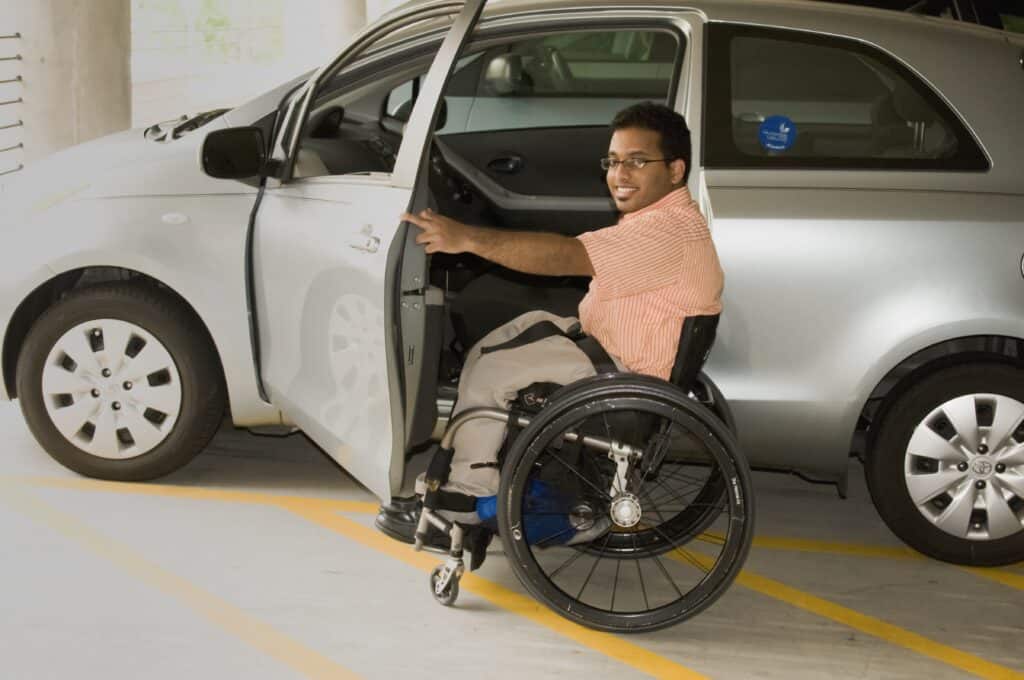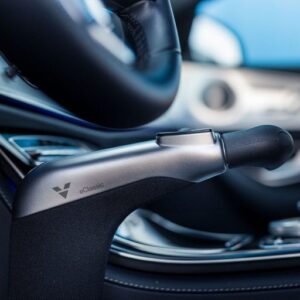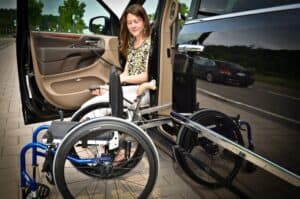Wheelchair securement systems provide safety to wheelchair users and can be a lifesaver in the event of an accident or sudden stop. A securement system is necessary because simply putting the brakes on a wheelchair will not keep it in place inside a moving vehicle. There are different types of securement systems that ensure safety.
The following will outline everything you need to know about wheelchair securement systems.
How does the wheelchair securement system work?
Wheelchair securement systems are designed for safety and are a requirement for wheelchair passengers. The securement system is built directly into the floor of a wheelchair accessible vehicle. It usually involves wheelchair tie-downs, tie-down straps or a docking system, which ensures that the wheelchair is locked into place so that the passenger is safe while the vehicle is in motion.
The three main types of wheelchair tie-downs are:
Most securement systems have a universal design to accommodate almost all wheelchairs. However, there are different methods to securing the wheelchair and it is important to understand the differences.
1) Non-retractable tie-downs
The non-retractable strap is a 4-point system that ensures the wheelchair is safely secured in place. This is a manual system that is often the most economical choice among the three. Once the wheelchair is in the right position, two straps are tightened on the front and two more straps are tightened on the back. The straps do not retract, which means once they are released you need to be aware that they are there.
2) Retractable tie-downs
Retractable tie-downs are also a 4-point system that is simple to use. These straps operate in a similar manner, where there are two on the front and two on the back. The main difference is that when the straps are released, they automatically retract into housing. They tighten and retract automatically once secured.
3) Electric/automatic docking systems
Automatic docking systems utilize a single-lock point beneath the wheelchair. They are one of the most popular options as they are very convenient. The wheelchair is secured simply by pushing it into a predetermined position, where it slides into position and automatically locks. This is ideal for wheelchair users who are driving.

Advantages to wheelchair securement systems
- They make it easier for wheelchair users to enter and exit a vehicle because they can stay in their wheelchair
- It is less exhausting than having to transfer from a wheelchair to an automobile
- Safety
- You can easily accommodate multiple passengers
Things to consider when choosing the wheelchair securement system
It is important to choose a system that works best for your situation. It is also important to take into consideration your wheelchair’s characteristics, such as height and length.
Things to know when using a wheelchair securement system
- Ensure the wheelchair brakes are applied or the powered wheelchair switch is turned off
- If using a tie-down system, use all four restraints provided
- The front restraints/belts and rear restraints should be secured at a 45 degree angle
- Inspect the restraints after any twists and make sure to fix them before the vehicle starts moving
- Never attach restraints to removable parts, such as the armrest or headrest
- Wheelchairs must be in the front facing position
- Passengers must wear the lap and shoulder belt provided when in the vehicle
- Do not cover any devices mounted in the chair
- Do not hook the seat belts over the armrests
- Store the restraints/belts in an enclosed container when not in use to avoid damage and for safety
The purpose of the wheelchair securement systems is to keep the wheelchair in place in a moving vehicle to prevent the wheelchair from tipping, twisting and tilting during all driving conditions. This article provides an overview of what you need to know about wheelchair securement systems.





